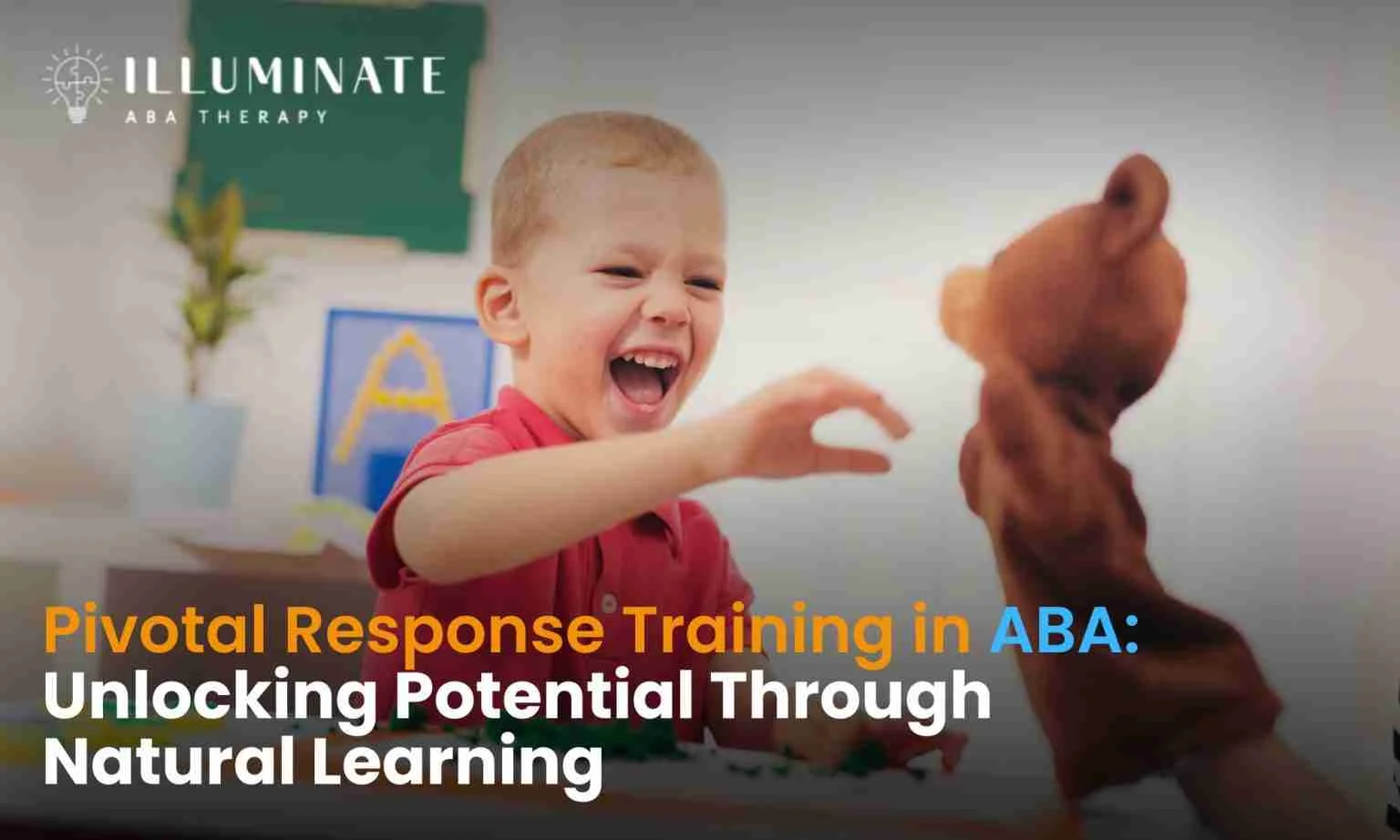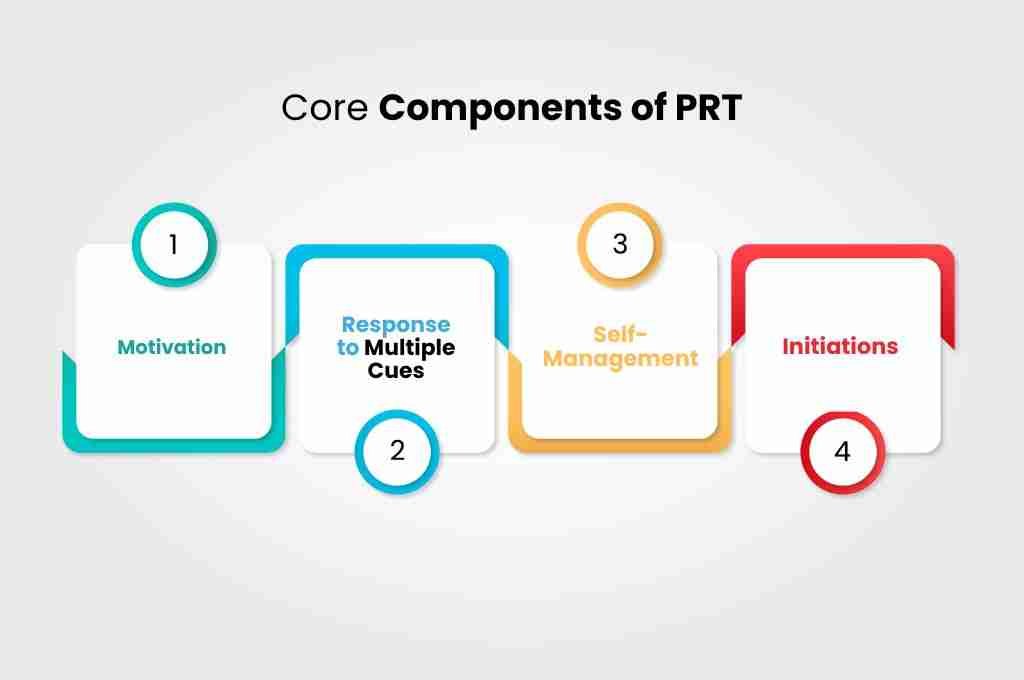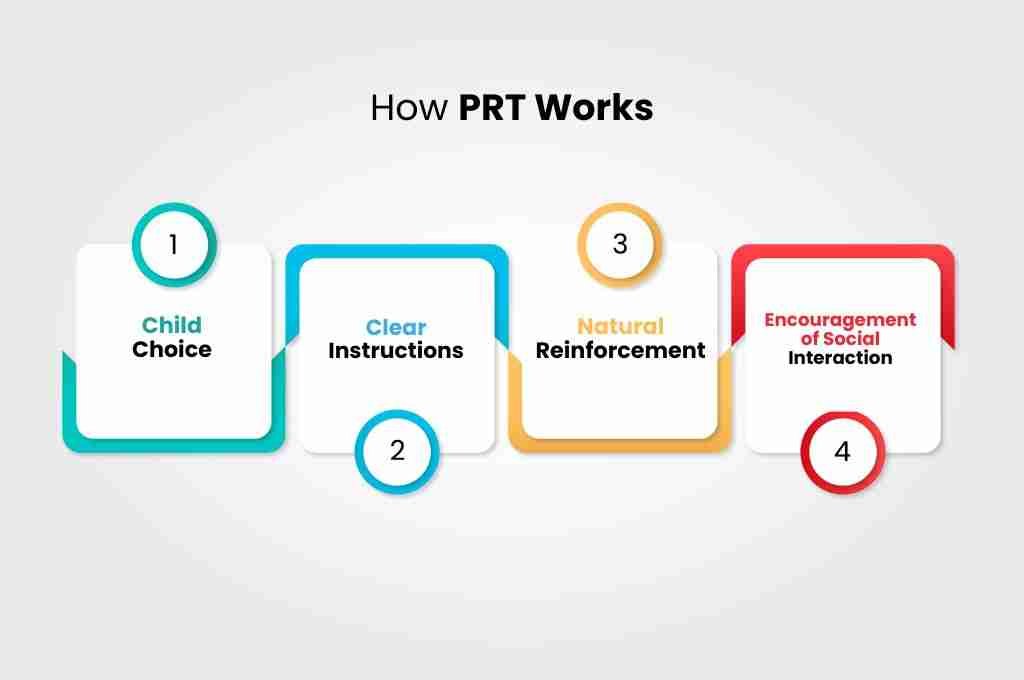Pivotal Response Training in ABA: Unlocking Potential Through Natural Learning
ABA TherapyJuly 17, 2025

Introduction to Pivotal Response Training (PRT)
Pivotal Response Training (PRT) is a child-centered approach within the framework of Applied Behavior Analysis (ABA) that focuses on enhancing pivotal behaviors.
These pivotal behaviors are crucial as they can lead to significant improvements across various developmental areas for children, particularly those with autism.
Table of Contents
What is PRT?
Developed in the 1980s by Dr. Robert and Lynn Koegel at the University of California, Santa Barbara, PRT emerged as a naturalistic intervention designed to address the unique needs of children with autism. Unlike traditional ABA methods that often rely on structured, therapist-led sessions, PRT emphasizes learning in natural environments through play and everyday interactions.
The core philosophy behind PRT is that by targeting pivotal areas such as motivation, self-management, social interactions, and communication skills, we can foster broader behavioral changes. This approach not only makes learning more engaging for children but also encourages them to generalize their skills across different settings.
The Importance of Pivotal Behaviors
Pivotal behaviors are foundational skills that have a ripple effect on a child’s overall development. By focusing on these key areas, practitioners can facilitate widespread improvements in various domains.
Examples of Pivotal Behaviors
- Motivation to Learn: Encouraging children to engage with learning materials actively.
- Initiating Interactions: Teaching children to start conversations or ask for help.
- Responding to Multiple Cues: Helping children learn to respond appropriately to various stimuli in their environment.
When these pivotal behaviors are nurtured, children often experience enhanced social skills, improved communication abilities, and better academic performance.
Core Components of PRT
PRT is built around several core components that guide its implementation:

1. Motivation
Increasing a child's motivation is essential for engagement. Strategies include:
- Child Choice: Allowing children to choose activities or materials they find interesting.
- Task Variation: Switching tasks frequently to maintain interest.
- Natural Reinforcement: Using rewards that are directly related to the activity (e.g., if a child requests a toy, they receive it).
2. Response to Multiple Cues
Teaching children to respond to various stimuli improves their flexibility and comprehension. This includes recognizing colors, shapes, and sounds.
3. Self-Management
Encouraging self-regulation helps children track their progress and reward themselves for achievements.
4. Initiations
Promoting spontaneous social interactions is vital. This could involve encouraging a child to ask for help or initiate play with peers.
PRT vs. Traditional ABA Approaches
PRT differs significantly from traditional ABA methods:
- Naturalistic Approach: Learning occurs in everyday environments using natural reinforcements rather than structured settings.
- Child-Led Activities: PRT incorporates play and allows children to take the lead in their learning experiences.
This flexibility not only makes learning more enjoyable but also aligns with how children naturally engage with the world around them.
How PRT Works
Implementing PRT involves several strategic steps:

Step 1: Child Choice
Allowing children to select activities increases their engagement and motivation.
Step 2: Clear Instructions
Providing straightforward instructions related to target behaviors helps guide learning.
Step 3: Natural Reinforcement
Using rewards tied directly to activities reinforces desired behaviors effectively.
Step 4: Encouragement of Social Interaction
Facilitating interactions with peers or adults builds essential social communication
Implementing PRT in Everyday Settings
PRT can be seamlessly integrated into various environments:
At Home
Parents can utilize PRT strategies during daily routines by encouraging their child to request snacks or initiate playtime activities.
In Therapy Sessions
Therapists employ PRT techniques to enhance social, communication, and academic skills through natural interactions during sessions.
At School
Teachers can incorporate PRT by utilizing child-led learning approaches and reinforcing positive behaviors through natural consequences.
Examples of PRT in Action
- Communication: Teaching a child to make requests by allowing them to choose from their favorite toys or snacks.
- Social Skills: Encouraging turn-taking during games reinforces sharing and responding positively to peers.
- Academics: Using preferred materials helps teach concepts like colors or shapes while rewarding successful responses with praise or additional playtime.
Benefits of PRT
The advantages of implementing PRT are numerous:
- Fostering Natural Interactions: Children engage more authentically in social situations.
- Generalization of Skills: Skills learned through PRT often transfer across different environments—home, school, community.
- Evidence-Based Outcomes: Research supports the effectiveness of PRT in improving communication, social behavior, and academic performance among children with autism.
Challenges and Solutions
While implementing PRT can be beneficial, several challenges may arise:
- Sustaining Motivation: Children may lose interest over time.
- Handling Distractions: Naturalistic settings can be filled with distractions that hinder focus.
To overcome these challenges:
- Adjust reinforcements based on what motivates the child at that moment.
- Change activities frequently to maintain interest.
- Break tasks into smaller steps for easier management.
Tips for Parents and Caregivers
Parents play a crucial role in implementing PRT effectively at home:
- Use everyday activities like mealtime or playtime as opportunities for learning.
- Collaborate with ABA therapists to develop a consistent plan that spans different settings.
- Explore resources available online or through local organizations focused on autism support and education.
Conclusion
Pivotal Response Training offers a flexible, engaging approach that promotes pivotal behaviors leading to substantial improvements in communication and social skills for children with autism. By focusing on naturalistic learning experiences tailored to each child's interests and needs, parents and therapists can unlock their potential effectively.
If you’re interested in exploring how PRT can benefit your child’s therapy program, we invite you to contact us at Illuminate ABA for more information on our services tailored specifically for your child's growth and development. Together, we can make meaningful strides toward enhancing your child's learning journey!
Get Insights On: Token Economies in ABA Therapy
